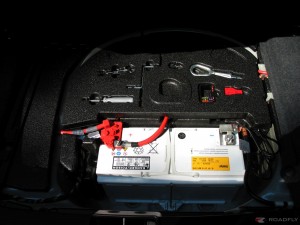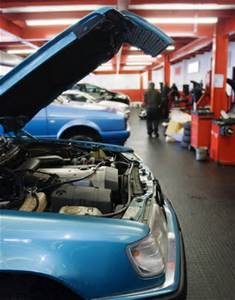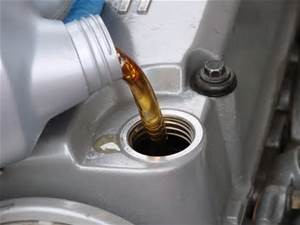If you can be more diligent about car maintenance in the new year, you’ll save a lot of money in the long run. You’ll also have a longer-lasting, more reliable vehicle that has a higher resale value when you decide to part with it – all good reasons to spend just a little more time taking care of your 4-wheeled friend.
Here are five simple things that can have long-term effects on your car’s reliability. While this isn’t a comprehensive list, it highlights some of the most overlooked car maintenance items that will help cut down on unnecessary car repair expenses.
Use High-Quality Gas
Engines run on three things: fuel, spark and air. So, start with the fuel you’re using. Make sure you’re putting quality fuel into your vehicle’s tank. If the fuel station looks sketchy on the outside, the tanks from which it pumps fuel may be sketchy as well.
Hint: Buy gasoline from a trusted source for most of your fill-ups and you could save yourself some potential headaches.
What about price? Buying higher-priced fuel doesn’t necessarily mean you’re getting better fuel. With gasoline, unless your car specifically requires high-octane gas, you’re better off buying a lower-rated fuel. Over time this switch will mean a lot of savings for you. Higher-octane equating to higher performance or better fuel economy is generally a myth. Some high-compression engines do require higher octane fuels, but most common car engines don’t.
Check the Electrical
 In maintenance, spark (electrical) is the most-often overlooked item. Most electrical problems start at car battery’s terminals. Whenever the hood is open, which it should be regularly for maintenance checks, check the battery terminals. Take off any covers if necessary. The connections should be clean and free of debris. The wires from the connectors should be tight without frays or breaks.
In maintenance, spark (electrical) is the most-often overlooked item. Most electrical problems start at car battery’s terminals. Whenever the hood is open, which it should be regularly for maintenance checks, check the battery terminals. Take off any covers if necessary. The connections should be clean and free of debris. The wires from the connectors should be tight without frays or breaks.
Hint: Remember that anytime you’re disconnecting the battery, disconnect the negative cable first. This avoids shorts.
From the battery terminal, follow the negative cable to where it ties to the vehicle’s frame. This is usually a very direct run. Make sure that end of the negative cable is also clean and fray-free. Do the same for the positive side, following it to the wiring harness where it will begin to split off.
Don’t Rely on Lifetime Filters
The last of the three engine foods is air. Air is drawn into your vehicle through its intake where it’s filtered and directed to the engine’s combustion chambers. If anything interrupts this flow of air, the engine will sputter or stall.
 Most cars have at least one particulate filter for the air that is being sent into the engine for combustion. That filter requires regular cleaning or replacement. Replacement is nearly always the better option. Rarely does a “lifetime” filter actually last the life of the car. Most air intake filters require replacement about every two oil changes, depending on the climate and air quality where you live. Filters are cheap enough that more frequent changes are better.
Most cars have at least one particulate filter for the air that is being sent into the engine for combustion. That filter requires regular cleaning or replacement. Replacement is nearly always the better option. Rarely does a “lifetime” filter actually last the life of the car. Most air intake filters require replacement about every two oil changes, depending on the climate and air quality where you live. Filters are cheap enough that more frequent changes are better.
Hint: Most air filters can be accessed without tools. Check your air filter as often as you check the oil and other fluids.
Other filters that are important to your vehicle’s operation are the oil and fuel filters. Use only quality filters or insist that only quality (preferably OEM) filters be used. Your owner’s manual will have specific intervals for oil and fuel filter replacements. Stick with these recommendations rigidly.
Check Fluids Regularly
The fluids in your vehicle include engine oil, windshield washer fluid, grease, brake fluid and likely transmission fluid. Some engines may have other fluids as well, such as diesel exhaust after-treatment.
All of these fluids have some way to access their fill level, so you’ll know how much is in there. Most also have a way to determine how clean the fluid is. Engine oil and transmission fluid are accessed with dipsticks located inside the engine compartment. Those sticks should be marked with “hot” and “cold” indicators to show where levels should be if the engine is hot (at operating temperature) or cold. These should be checked regularly. At every gas fill-up, if possible.
 Hint: Make a habit of opening the hood and checking oil, transmission and washer fluid levels every time you pump fuel into your vehicle.
Hint: Make a habit of opening the hood and checking oil, transmission and washer fluid levels every time you pump fuel into your vehicle.
Windshield washer fluid is held in a reservoir that is usually visibly accessible from under the hood. Fill levels are generally assessed by looking at the filler spout or reservoir and eyeballing the fluid seen through the semi-opaque container. It’s difficult to over-fill this reservoir, so when in doubt, add more fluid.
Brake fluid is easily accessible from underneath the hood as well. The reservoir is usually located directly on top of the brake master cylinder, which is almost always on the firewall (back wall of the engine compartment) directly in front of the driver. Do not open this reservoir unless you are adding fluid. If you are low on brake fluid, there’s a reason and it needs to be found and resolved immediately. Your brakes are your car’s primary safety item. Never neglect them.
Grease is a different matter. Most of the time there’s no easy to way to access grease points on your car. Some of them may even require partial disassembly of parts to access. Pay attention to your owner’s manual and its recommendation for greasing components on your vehicle. Then stick to those intervals. A large number of failures to mechanical components on a car are due to a lack of lubrication.
Check Your Wheels and Tires
Tire pressure directly affects tread life, safety and fuel economy. Yet few people remember to check their tires’ pressure regularly. Some newer cars now have tire pressure sensors built into them and show the tire pressure on the dashboard.
 For the rest of us, checking tire pressures at every fuel fill or on a weekly routine requires more diligence. But it should be done. Look at the sticker located inside your driver’s door for the recommended pressure, which will usually fall between 32 and 35 psi on most passenger vehicles.
For the rest of us, checking tire pressures at every fuel fill or on a weekly routine requires more diligence. But it should be done. Look at the sticker located inside your driver’s door for the recommended pressure, which will usually fall between 32 and 35 psi on most passenger vehicles.
Tread wear is another important factor. The less tread you have, the less grip your tires will give, especially in a hard stop. Tread depth should be well above the indicator bars built into the tread. When your tires begin to get close, get them replaced.
Hint: When washing your car, take particular care to clean the brake dust and grime from your wheels. This will save a lot of ugly pitting later.
Finally, the wheels on which those tires are mounted should also get routine inspections. Your regular tire rotation schedule is generally every other oil change or every 5,000 to 6,000 miles. (Check your owner’s manual.) It’s a great time to have your wheels inspected. Cracks, big dents, etc. should be noted and are cause for concern. Replace them as necessary.
For GREAT deals on a new or used Chevrolet, Buick or GMC check out Bosak Chevrolet Buick GMC TODAY!